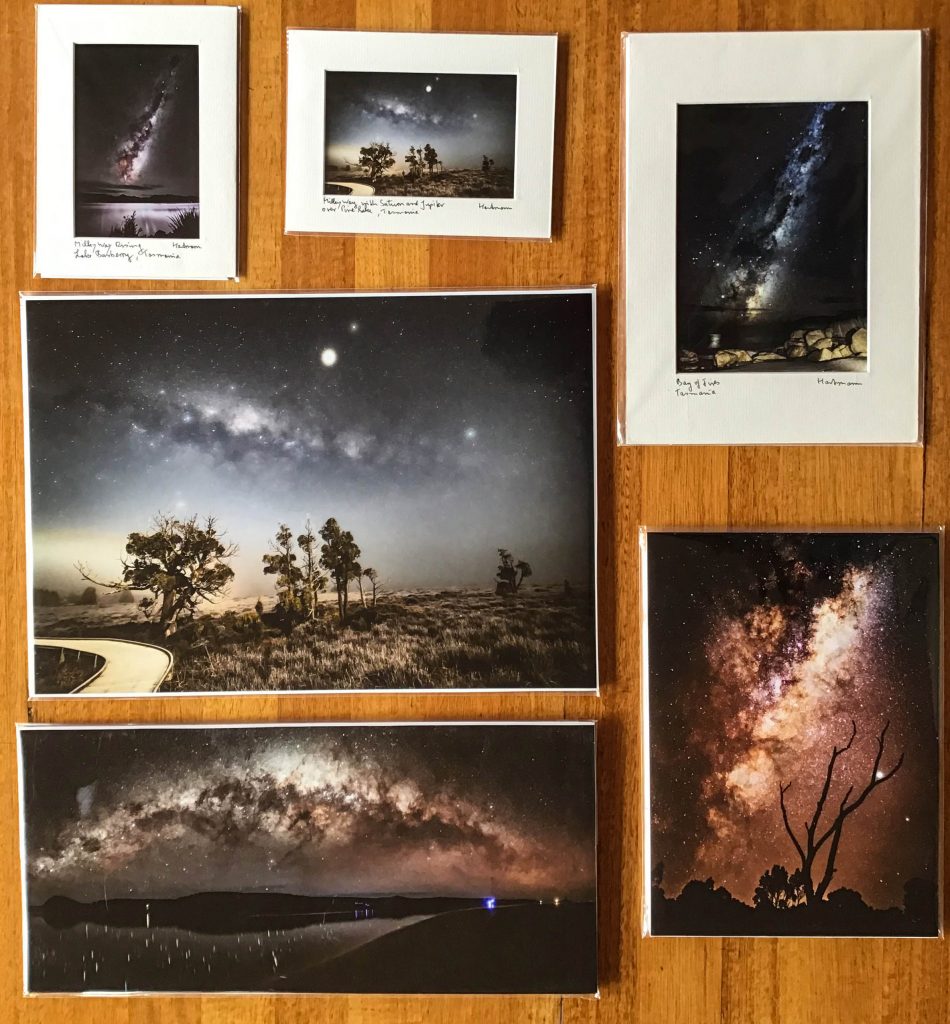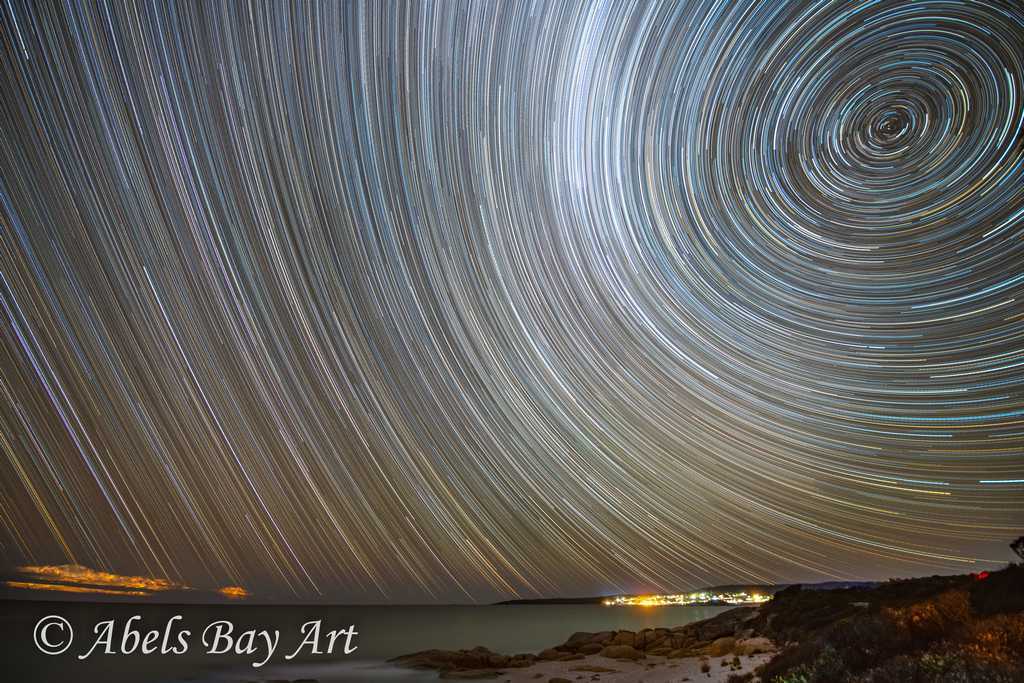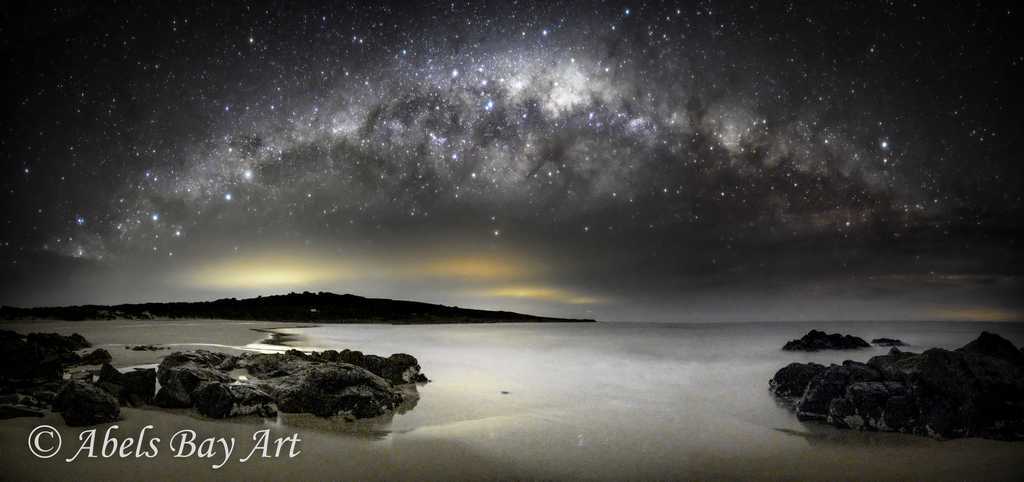The products

My astrophotography is available in my shop in various sizes. I use an Epson P800 commercial printer with Epson UltraChrome HD ink on Ilford smooth satin paper to achieve the premium print results which I require. Larger prints are mailed out rolled in sturdy cardboard tubes. Smaller prints are mailed flat and are packed with a detachable foamboard backing to give protection during shipping. Check the descriptions under “options” in the shop for details.
Out in the night
I have spent many nights out there under the stars. Unfortunately the best nights for astrophotography are the really frosty ones. Clear skies in winter mean minus zero temperatures… But the results can be very rewarding!
Star Trails

The earth rotates around its axes and makes the night sky seem to rotate around us, around the south celestial pole. Any photo taken with an exposure longer than -let’s say- 20 seconds will start to show the stars not as points but as streaks. My star trail photos are put together from a series of single long exposure photos. I take single exposures at 30 seconds each, one after the other, for two hours, or three or four hours. Then I put all the photos together and get one photo showing the trails of the stars around the south celestial pole.
The Milky Way

You cannot always see the Milky Way. During our southern summer the nights are warm and would be ideal for astrophotography, unfortunately the Milky Way does not present itself in its best form at this time of the year. Winter is much better. The galactic core of the Milky Way rises in the east in the evening, and a couple of hours before dawn we can see the whole Milky Way stretch over the western horizon before it disappears at dawn.
Taking photos of the night sky
The easiest way to take a photo of the night sky is with a camera with a wide angle lens, ideally a full frame camera and ideally a wide angle lens with an aperture of 2.8 or better. A 15mm lens will be able to capture a big part of the sky. An exposure time of 15 seconds max with an ISO setting of 6400 are good starting points. I would not try to use exposures of over 15 seconds. At 15 seconds or less the stars will be sharp, above that setting they will start to smear (due to the rotation of the earth). Photos like my panorama above are put together from a series of 10 or more individual photos, maybe six from left to right, two rows above each other. I use a 20mm lens with an aperture of max 1.8 to get sharper results and more details than with a single shot.
But the equipment is of no use when clouds are chasing across the sky and snow begins to fall…